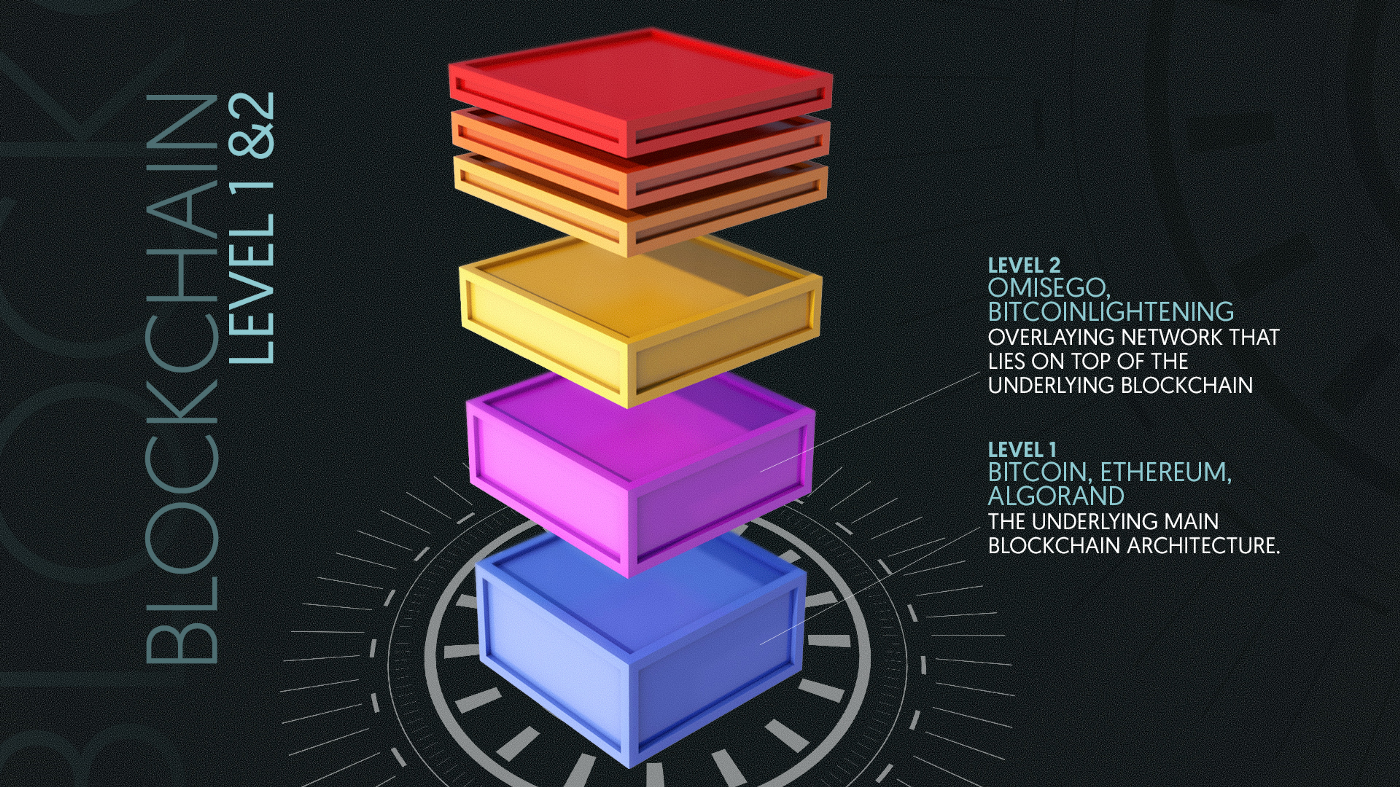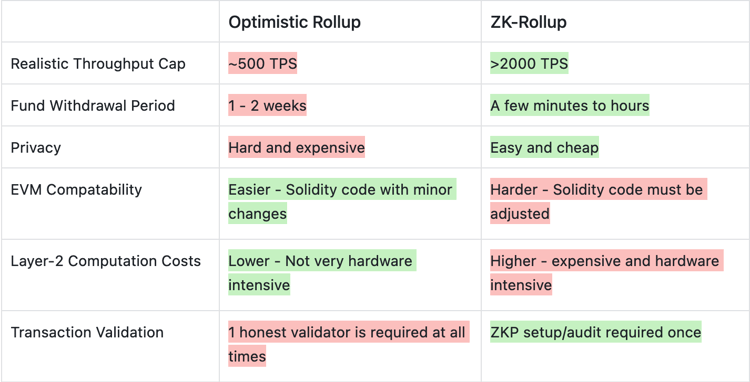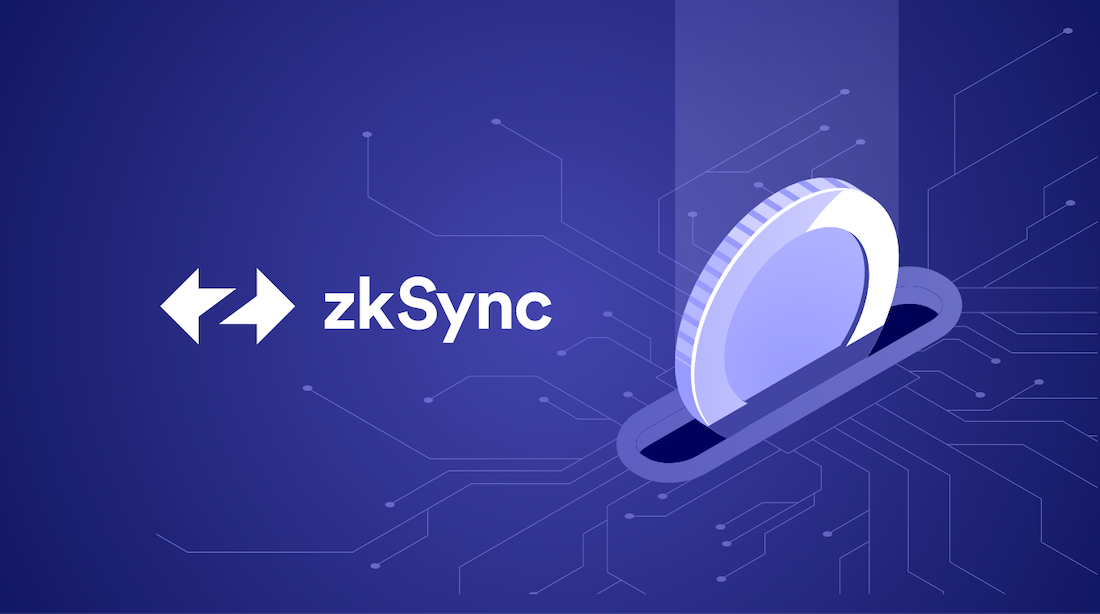What is zkSync? The ultimate Guide to zkSync
zkSync is a Layer 2 solution build on top of the Ethereum blockchain that offers low gas and fast transactions, without compromising on security. in this post, we’ll provide an all-encompassing rundown of ZkSync, including the history of Zksync, an explanation about layer 2 and Rollups and lastly how you can start with ZKsync.
Table of contents:
- What is zkSync?
- The History of zkSync
- What is a layer 2 solution?
- How does a Rollup work?
- What sets zkSync apart?
- zkSync token and airdrop
- Pros and cons of zkSync
- How to start with zkSync
What is zkSync and Why Does it Matter?
The Ethereum blockchain is one of the biggest chains in the crypto space, but it has two big problems that aren't solved yet. The transactions fees are way too high, and the chain is not really fast. This makes it more difficult for al lot off people to use this chain. Because who wants to pay a transaction fee of $30 or $50 for transferring some money right?
Many new projects use layer 2 scaling protocols to tackle these issues and improve the network performance. ZKSync is one of these projects and brings scalability, lower fees without sacrificing security.
The goal of ZKSync is to give the Ethereum blockchain a trustless, zero-compromise Layer 2 scalability solution. The team does this via availabe datat that is on-chain, zkRollup technology, and zero-knowledge proofs. As a result, users can transmit money over zkSync without having to worry about friction, switching between layers, or new deposit addresses.
The ZKSync solution is very intriguing to developers as well as users. This project is important for a number of reasons, including the potential for lower costs, improving the user experience of cryptocurrency wallets and services. It guarantees that payments can be made to both existing Ethereum addresses and smart contracts, eliminates the need for intermediaries, and reduces fees by up to 99%.
The History of ZKSync
Matter Labs, a German business focused on scaling Ethereum, launched ZKSync. It started developing in December 2019 and launched the first version in June 2020. With this first iteration ZKSync was able to scale the network to 300 Transactions per second. To give you some context, the Ethereum blockchain is doing about 40 Transactions per second.
But ZKSync didn't stop there, they started the development of ZKSync 2.0 which will go live at the end of 2022. This enabled the compatibility of EVM in the rollup enviorment what will increase the throughput from 3000 transactions per second (tps) to 20.000 tps.
This impressive scaling solutions has not been unnoticed by big investors. In a seed round in september 2019 Matter labs has raised $2 million and another 6 million in February 2021 from massive companies like Binance, Coinbase, Curve and Aave. Begin this year (last january) the company was backed with $200 million by BitDAO.
What is a layer 2 solution?
Layer 1 is the main big blockchain network and is in charge of on-chain transactions. Layer 2 is a connected network that is build on top of the layer on and is thereby in charge of off-chain transactions.
In essence, layer 2 scaling solutions include shifting a blockchain protocol's transactional load to an off-chain infrastructure. The transferred transaction's final results would be reported to the primary blockchain through the off-chain architecture. Layer 2 scaling solutions provide easier and more flexible delegation of data processing responsibilities to supporting architecture, to put it simply. As a result, there is no congestion with the fundamental blockchain system, allowing for scalability.
There are different scaling solutions that a project can use, a common solution is called a sidechian but ZKSync is using Rollups. Let’s dive deeper into those.

How does a Rollup work?
Rollups are a method for reducing the cost and speed of transactions. Rollups combine several transactions into one transaction. The final transaction is presented to the Ethereum blockchain as a single transaction. Because of this, costs are reduced and the speed at which transactions occur is increased.
Vitalik Buterin, the co-founder of Ethereum, thinks that scaling solutions like rollups will continue to play an important role on the blockchain even after the implementation of Ethereum 2.0.
There are two types of Rollups: Optimistic rollups and zero-knowledge rollups. zkSync is using the last one but first we would want to take a look at the optimistic rollup:
Optimistic rollups assume that the data they are processing is valid. To protect against fraudulent transactions, optimistic rollup protocols allow people to contest invalid trades. The fraudulent transaction is submitted directly on the Ethereum network to check if it’s legit, and to settle the dispute. Both parties have ETH staked and would lose money if they are wrong or lie.
Zero-knowledge rollups, also called zk-rollups, are a different type of rollup. They use cryptography that allows someone to prove a statement is true without disclosing additional information about it. For example a Zero-knowledge rollup can prove that someone is Greek without showing their passport.

Examples of Zero-knowledge rollups are:
What sets ZKSync apart?
There are many Layer 2 scaling solutions available in the Ethereum ecosystem. Every project attempts a little bit of a different strategy, but the team at zkSync is sure that they stand out in terms of security and usability. The availability of on-chain data and the usage of zkRollup technology mean that operational activity is not required to safeguard funds.
Vitalik Buterin has praised the idea of zkRollups as "viable for payments, exchange, and other application-specific use cases." Furthermore, Buterin anticipates that ongoing ZK-SNARK technology advancements will make zkRollups the preferred choice for all use cases. As a result, it is a distinct but perhaps better strategy than optimistic rollups.
ZkSync will perform incredibly well even if the Ethereum network were to become clogged again for whatever reason. Assets in zkSync are not threatened by an overloaded network, and routine operation should be undisturbed regardless of amounts. Even if a high gas cost is necessary to have blocks mined for zkSync at a high priority, those prices will be insignificant in comparison to Layer 1 expenses.
Does ZKsync have a token yet?
The fast and simple answer is yes, but at the moment it is not possibly to obtain the tokens yet. This is because ZKsync is this in development of its layer two and not ready to release their own token yet. Their efforts are momentarily spend elsewhere, improving various parts of the ZKsync network.
'Right now, ZKsync is at level 4 of this scale. It is fully noncustodial with zero trust assumptions: the ZKsync validator has no power to do anything with user's assets without explicit authorization.'
If you want to read more about the token you can read our blog: ZKsync have Its own native token?
There is a rumor that when zkSync launches its own coin, those who have transacted on the mainnet may receive an airdrop. Please be aware that there is no assurance that they will conduct an airdrop. If we take a look at other layer 2s that have already launched there token, for example Optimism.io we can expect that zkSync will launch its token in the upcomming weeks. To learn more about airdrops read our blog: airdrop
Pros and cons of Zksync:
Pros:
One benefit of using zkSync is that the support token payment cost is simple to use and doesn't require payment in Ethereum. You can use another cryptocurrency to pay the support token charge. For instance, you can opt to use Tether to pay the charge when transferring a tethered token (also known as a stablecoin) on the platform (USDT).
Additionally, zkSync transactions take less time overall. The zkSync system is set up such that withdrawing coins takes less time as more transactions are processed. Three hours is about how long it takes for a withdrawn currency to show up in the user's account.
At last, the transaction fee is very cheap. As a example if you want to transfer a token on the ethereum main net you would pay about $15. But on Zksync this would cost you about $0,20.
Cons:
Consensus networks used for quicker speed, such as delegated proof-of-stake (DPoS) and practical Byzantine fault tolerance (pBFT), weaken the security of the zkSync consensus method. Layer-2 networks operate more quickly. The methods employed to increase its speed are, however, typically centralized.
Some popular wallets and exchanges do not sync but still allow layer-2 networks, which could lead users to transmit transactions meant for an exchange to layer 2 inadvertently. As a result, transactions may be irretrievably lost, particularly if they are not acknowledged by layer-2 networks.
How to start with Zksync?
Now that you have a basic understanding of how Zksync works and what it is we will dive into the fun part of this article. How can you use Zksync and start playing around in its still growing ecosystem. As you know, ZKsync is build on top of the ethereum blockchain so just like other ETH based projects you can use the MetaMask wallet to hold your crypto and interact with Zksync protocols. If you are completely new to MetaMask here is a tutorial on how to install MetaMask and add ZKsync to it.
The ZKsync Ecosystem:
Over 100 projects are currently running on zkSync, according to Zk Daily, an informative Twitter feed for spreading awareness of ZKSync. This indicates that the zkSync ecosystem is growing and becoming into a sizable business. Although zkSync has several investors, the following article highlights 3 of the most interesting project on ZKsync.



